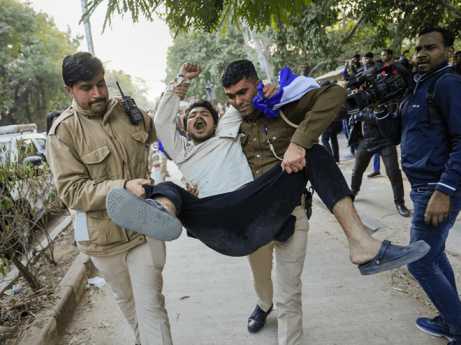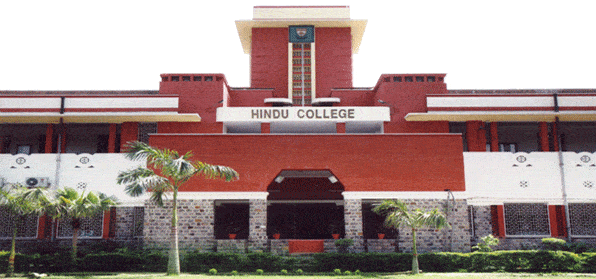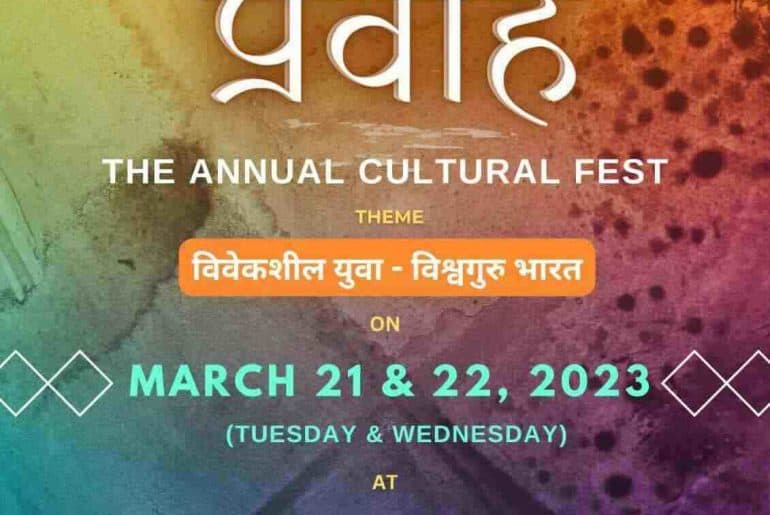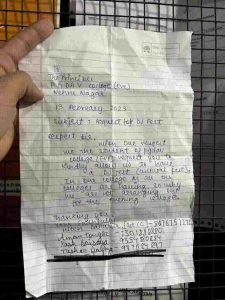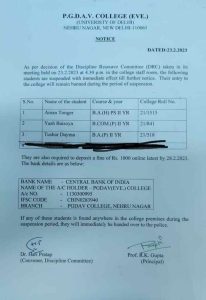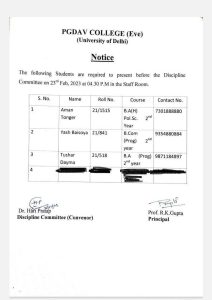More than 50 academics from DU, JNU, and other institutions have written to the Delhi University VC, requesting the removal of the punishments meted out to students who were allegedly involved in the screening of the Narendra Modi BBC documentary.
On Thursday, April 6 2023, 59 academics, on behalf of the India Academic Freedom
Network, wrote to the University of Delhi, advocating for the revocation of the punishment
imposed on students for screening the BBC documentary on Prime Minister Narendra Modi
and his alleged involvement in the Gujarat riots. The letter addressed to Vice-Chancellor, Prof. Yogesh Singh, stated that the failure to obtain approval for its screening is “not a serious enough offence” to prevent students from taking examinations.
“We need not tell you that the university is supposed to be a space where students and teachers feel free to get information from any source, decide for themselves and express themselves freely. They are adults and can make decisions for themselves. We, teachers and administrators are not here to police their thoughts or censor their sources of information.” The letter stated.
The documentary, India: The Modi Question, critically explores then Chief Minister Modi’s involvement in the Muslim genocides in Gujarat in 2002. It was screened on-campus by several student groups on 27th January,2023. The following day, Delhi Police detained 24 students from Delhi University’s Arts Faculty and a disciplinary committee barred 2 PhD students namely Lokesh Chugh and Ravinder Singh from all academic activities, including exams for one year, for allegedly
planning to exhibit the documentary.
In the memorandum issued on March 10, the DU registrar claimed that the BBC documentary is ‘banned’ and requested 6 other students to submit written apologies to the administration for screening the film without permission. The professors response, however, questioned the disciplinary actions’ justifications, arguing that they were out of proportion to the alleged violation. “The memorandum regarding the punishment, as published in the media, states that they had violated the ban on screening of the said documentary by the government of India,” the letter stated. “We want to bring to your notice that it is known to all that the documentary was never banned and is still not banned by the government.”
The letter then specified that the documentary was “only a critical examination of the present regime in the context of the situation of Muslims.” It was signed by Satish Deshpandeand Nandini Sundar from the Department of Sociology, Ashwini Kumar from DUTA and Sucharita Sen and Avinash Kumar from Jawaharlal Nehru University, among others.
“The only condition we all must follow while exercising this right is that it should not promote hatred and violence. How could it’s screening by some students become a threat to order on the campus, is beyond our understanding.” they added. The signatories stressed the significance of creating a secure environment on campus for students to practice critical thinking. “It is not the job of the university to defend the government or disallow thoughts critical to it. We hope that our concern would be heard and the said punishment order would be withdrawn.”, the letter concluded.
Image Credits: TFI Post
Read Also: Students Detained by Delhi Police after NREGA Discussions
Manvi Goel
[email protected]

